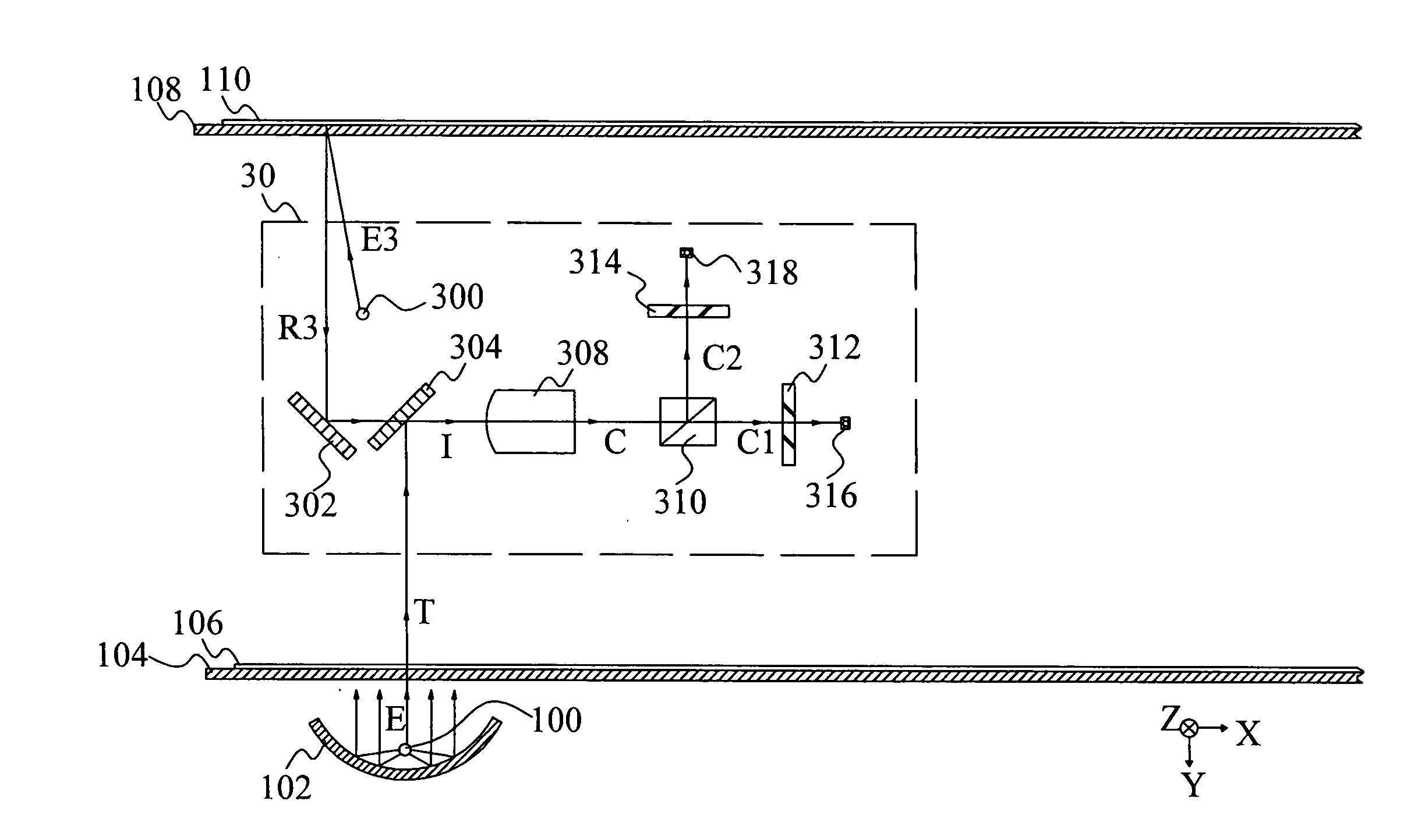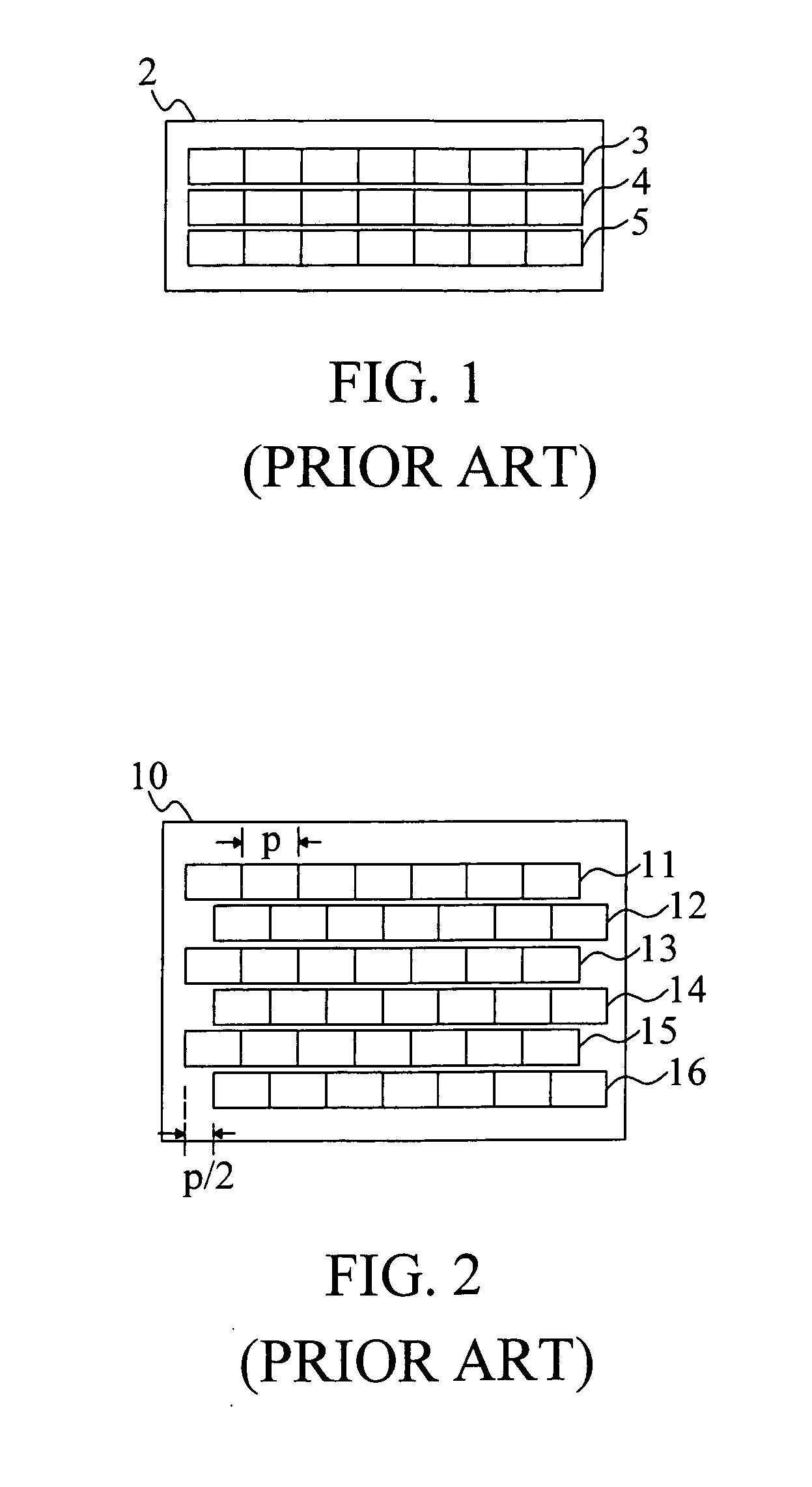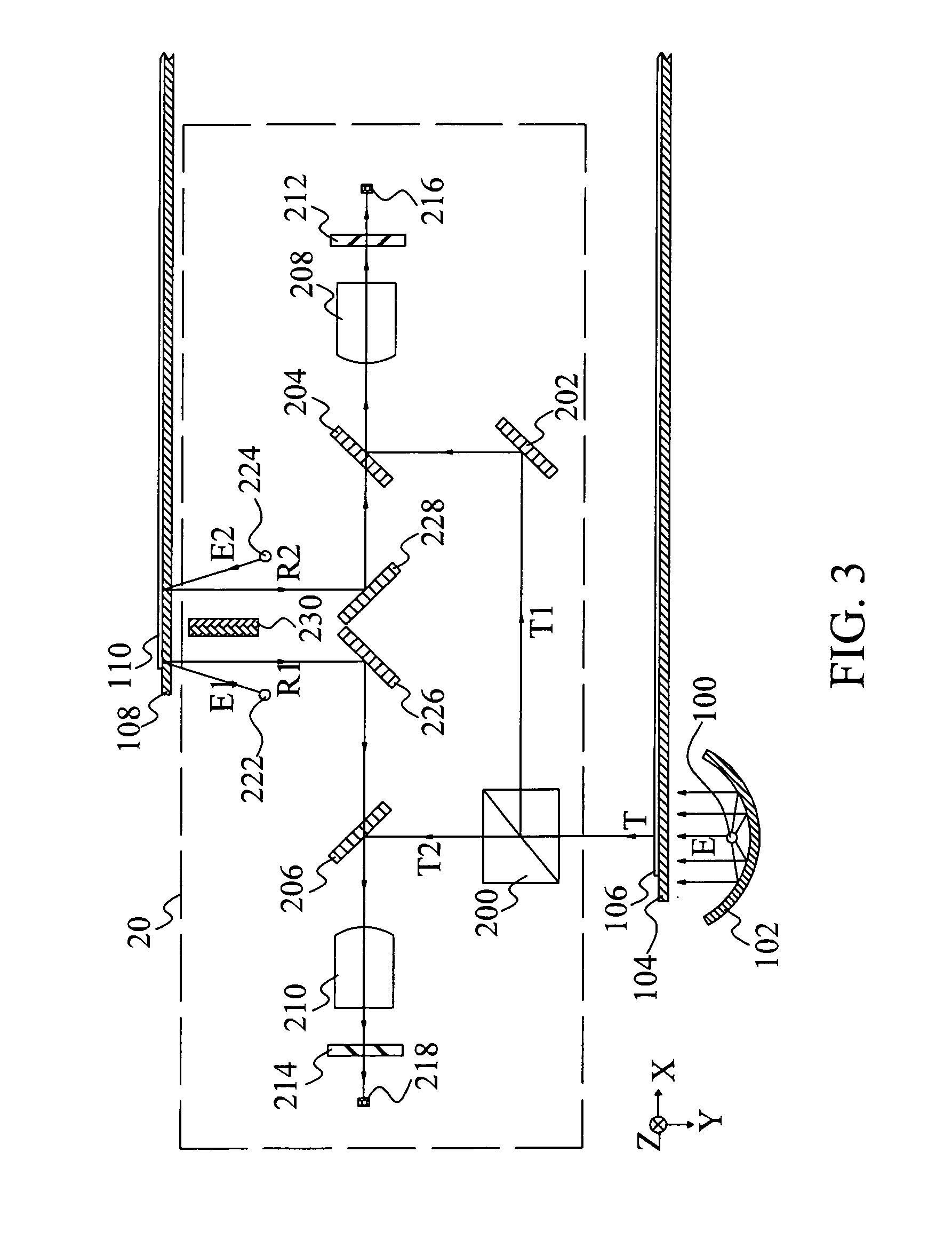Structures and methods thereof for scanner with two CCD arrays
a technology of structure and method, applied in the field of structure and method of scanner, can solve the problems of slowing down scan speed, unfavorable scanning effect, and resolution of scanner, and achieve the effect of lowering scan time and elevating the quality of scanned imag
- Summary
- Abstract
- Description
- Claims
- Application Information
AI Technical Summary
Benefits of technology
Problems solved by technology
Method used
Image
Examples
first embodiment
[0040]FIG. 3 is a schematic diagram of the scanner structure with two CCD arrays and two focus-image lenses which can scan the transparent media and the reflective media according to the present invention.
[0041]Firstly, the scan process for the transparent media is explained as followed. A transparent medium 106 is set on a transparent plate 104. In one preferred embodiment, transparent plate 104 can be a film holder to hold a scanned film at a scan position. A light-source 100, located below the glass plate 104, is composed of a Cold Cathode Fluorescent Lamp (CCFL) or its similar visible light-source and an Infrared Light Emitting Diode (IR-LED). The CCFL or its similar visible light-source and the IR-LED can be controlled to illuminate separately or simultaneously. The curved mirror 102 is used to reflect the back-light of the light-source 100 to enhance the intensity of the incident light “E” for the transparent medium 106, it can be omitted if the intensity of the light-source 1...
second embodiment
[0053]Firstly, the second embodiment is to explain the function of the image recovery of the present invention for the reflective medium 110. Please refer to FIG. 3 again. It can be understood from the previous description that the CCD arrays 216 and 218 respectively receive the reflective image beams which are originated from the two light-sources 222 and 224 and reflected on the surface of the reflective medium 110. After the scan action, the CCD arrays 216 and 218 respectively receive two independent images of the reflective medium 110. The incident lights “E1” and “E2” emitted from the light-sources 222 and 224 are located at two different sides of a normal, which is normal to the plane of the reflective medium 110 and between the two light-sources 222 and 224. It means that the two incident lights “E1” and “E2” have different incident angles. Therefore, the hetero-points such as the dust, pollutants, or scratches on the scanned object will form two different shadows on the scan...
third embodiment
[0054]The third embodiment is to explain the function of the image recovery of the present invention for the transparent medium 106, please refer to FIG. 3 again. The CCFL or its similar visible light-source and the IR-LED of the light-source 100 illuminate simultaneously and move along with the optical carriage 20 in the “X”-direction. The two switching filters 212 and 214, which are the visible-light filter and the IR-light filter respectively, are set in the optical routes. Therefore, the CCD arrays 216 and 218 respectively receive a visible-light image and an IR-light image of the transparent medium 106. Because the dyes are transparent and the hetero-points are relatively opaque to the IR light, thus the defects of the scanned image caused by the hetero-points for the transparent medium 106 can be recovered by comparing and processing the two scanned images of the CCD arrays 216 and 218, and then a recovered image can be stored or output.
PUM
 Login to View More
Login to View More Abstract
Description
Claims
Application Information
 Login to View More
Login to View More - R&D
- Intellectual Property
- Life Sciences
- Materials
- Tech Scout
- Unparalleled Data Quality
- Higher Quality Content
- 60% Fewer Hallucinations
Browse by: Latest US Patents, China's latest patents, Technical Efficacy Thesaurus, Application Domain, Technology Topic, Popular Technical Reports.
© 2025 PatSnap. All rights reserved.Legal|Privacy policy|Modern Slavery Act Transparency Statement|Sitemap|About US| Contact US: help@patsnap.com



